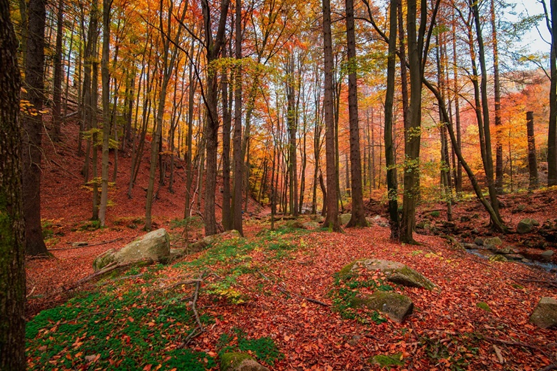
From pumpkin spice lattes to red scarves and flannels, piles of leaves in the front yard and a crisp breeze in the air, carved pumpkins on doorsteps or Halloween candy in the store, wherever you go it’s nearly impossible to ignore the upcoming festive season- autumn! For most people, this season marks the shift into colder weather and festive holidays back-to-back. Although it can still be a lot of fun to celebrate, most Floridians do not get to experience the staple autumn seasonal changes. The climate of south Florida is one that is much warmer on average than other parts of the U.S. and is a lot more stable over the course of the entire year. This leads to an autumn season that looks a lot closer to summertime than any color changing autumns seen in the movies. As the shift into winter happens, the air gets colder, and the days get shorter. In Florida, however, this shift in temperature is tiny. The average winter temperature in south Florida is 24?C (75?F). For many U.S. citizens, this is vacation weather!
In order to understand why Florida’s autumn looks the way it does, it is important to understand what autumn is. Why do seasonal changes happen? What makes the leaves change color in the fall? The first day of autumn this year falls on Sunday, September 22nd. The first day of fall is also known as the Autumn Equinox. This is one of four special days of the year, each marking a new season: the Winter and Summer Solstices and the Spring and Autumn Equinoxes. As the earth rotates around the sun every year, it is not aligned perfectly vertically. The earth is tilted on an axis at an angle of 23.5?. Because of this tilt, there are two sections of the year where one hemisphere of the earth will be closer to the sun or further away from the sun, making it hotter or colder, and two sections of the year where both the northern and southern hemispheres of the earth are at equal distance from the sun. The point at which your hemisphere of the earth is closest to the sun is known as the Summer Solstice and the point at which your hemisphere of the earth is furthest away from the sun is known as the Winter Solstice. The two points where both the northern and southern hemispheres are equal distance from the sun are known as the Spring and Autumn Equinoxes. These both mark a transition towards the next solstice, temperatures cooling down as you get further away from the sun, or temperatures heating up as you get closer to the sun.
Being in the northern hemisphere, the Autumn Equinox falls in September every year as we prepare to head into winter. One of the most notable phenomena of the autumn season is the changing of the leaves from bright green and blooming to shades of orange, brown, yellow, and red. This happens because, as the days get shorter and average daily temperatures start to drop, the chlorophyll within the leaves starts to break down. Chlorophyll is the chemical found in almost all species of plants that give the plant its green color. Without the chemical, other compounds in the leaves will start to become more prevalent, showing off a different color.
Although not many of the physical autumnal seasonal changes can be seen in Florida, there are still many things to do to celebrate the fall season and the Autumn Equinox. Get ready to decorate with beautiful fall colors, grab a pumpkin spice latte, and carve some pumpkins because autumn is quickly approaching. Happy fall y’all!